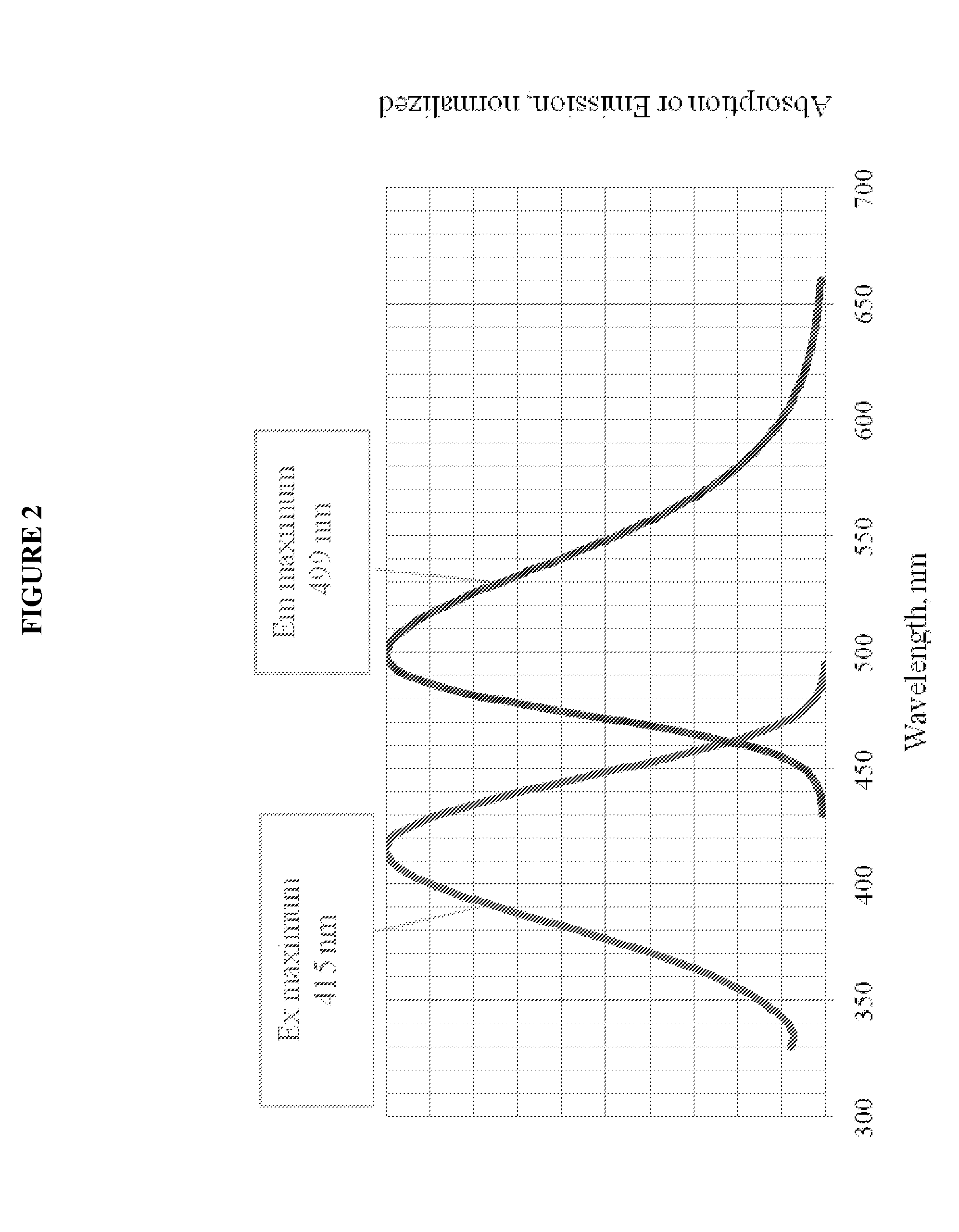Reactive heterocycle-substituted 7-hydroxycoumarins and their conjugates
a technology of coumarin dye and heterocycle, which is applied in the field of fluorescent chemicals, can solve the problems of destroying or reducing the quantum efficiency of fluorescent dye, affecting the accuracy of fluorescent dye, and destroying the fluorescent characteristic, so as to reduce the pka of coumarin dye, strong absorption, and high fluorescent
- Summary
- Abstract
- Description
- Claims
- Application Information
AI Technical Summary
Benefits of technology
Problems solved by technology
Method used
Image
Examples
example 1
Preparation of Compound 1
[0199]
[0200]4-Chlororesorcinol (50 g) is dissolved in dry ether (200 ml). To the solution are added finely powdered zinc cyanide (60 g) and potassium chloride (12 g) with stiffing. The suspension is cooled to 0° C. A strong stream of hydrogen chloride gas is blown into the solution with vigorous stirring. After approximately 30-60 minutes the reactants are dissolved. The addition of hydrogen chloride gas is continued until it stops being absorbed in the ether solution. The suspension is stirred for one additional hour on ice. The ether solution is poured from the solid that is treated with ice and heated to 100° C. in a water bath. Upon cooling the product crystallized in shiny plates from the solution, which is removed by filtration and air-dried to give the desired aldehyde.
example 2
Preparation of Compound 2
[0201]
[0202]Ethyl 2-thiopheneneacetate (10 g) and ethyl 6-bromohexanoate (12 g) are dissolved in dichloromethane (200 ml). To the solution is added anhydrous AlCl3 (24 g) under dry nitrogen protection with vigorous stiffing at 0° C. The reaction mixture is stirred under dry nitrogen protection at 0° C., and warmed to room temperature when the reaction is complete as indicated by TLC. The reaction mixture is poured into ice-water, and extracted with chloroform (3×200 ml). The chloroform layers are combined, dried over anhydrous Na2SO4, and the solvent is removed under vacuum to give a crude solid. The crude solid is further purified on a silica gel column with a gradient of chloroform / ethyl acetate as eluant to yield the desired Compound 2.
example 3
Preparation of Compound 3
[0203]
[0204]Compound 2 (10 g) is dissolved in ethanol (100 ml). To the solution is added 5 M NaOH (65 ml). The reaction mixture is stirred at room temperature, and neutralized with concentrated HCl when the reaction is complete as indicated by TLC. The resulted mixture is extracted with ethyl acetate (3×200 ml). The ethyl acetate layers are combined, dried over anhydrous Na2SO4, and the solvent is removed under vacuum to give the desired Compound 3.
PUM
| Property | Measurement | Unit |
|---|---|---|
| pKa | aaaaa | aaaaa |
| temperature | aaaaa | aaaaa |
| temperature | aaaaa | aaaaa |
Abstract
Description
Claims
Application Information
 Login to View More
Login to View More - R&D
- Intellectual Property
- Life Sciences
- Materials
- Tech Scout
- Unparalleled Data Quality
- Higher Quality Content
- 60% Fewer Hallucinations
Browse by: Latest US Patents, China's latest patents, Technical Efficacy Thesaurus, Application Domain, Technology Topic, Popular Technical Reports.
© 2025 PatSnap. All rights reserved.Legal|Privacy policy|Modern Slavery Act Transparency Statement|Sitemap|About US| Contact US: help@patsnap.com



